 您的购物车当前为空
您的购物车当前为空
Anti-PBP Antibody (4X935)
一键复制产品信息产品编号 TMAC-03091
别名 RKIP, Raf kinase inhibitory protein, Raf kinase inhibitor protein, R kip, Prostatic-binding protein, Prostatic binding protein, Phosphatidylethanolamine binding protein 1, Phosphatidylethanolamine binding protein, PEBP1_HUMAN, PEBP-1, Pebp1, PEBP 1, PEBP, PBP, Neuropolypeptide h3, Hippocampal cholinergic neurostimulating peptide, HEL S 96, HEL S 34, HEL 210, HCNPpp, HCNP, Epididymis secretory protein Li 96, Epididymis secretory protein Li 34, Epididymis luminal protein 210
Anti-PBP Antibody (4X935) 是一种 Rabbit 抗体,靶向 PBP。Anti-PBP Antibody (4X935) 可用于 ICC/IF,IHC,IP,WB。
Anti-PBP Antibody (4X935)
Anti-PBP Antibody (4X935)
一键复制产品信息产品编号 TMAC-03091 别名 RKIP, Raf kinase inhibitory protein, Raf kinase inhibitor protein, R kip, Prostatic-binding protein, Prostatic binding protein, Phosphatidylethanolamine binding protein 1, Phosphatidylethanolamine binding protein, PEBP1_HUMAN, PEBP-1, Pebp1, PEBP 1, PEBP, PBP, Neuropolypeptide h3, Hippocampal cholinergic neurostimulating peptide, HEL S 96, HEL S 34, HEL 210, HCNPpp, HCNP, Epididymis secretory protein Li 96, Epididymis secretory protein Li 34, Epididymis luminal protein 210
Anti-PBP Antibody (4X935) 是一种 Rabbit 抗体,靶向 PBP。Anti-PBP Antibody (4X935) 可用于 ICC/IF,IHC,IP,WB。
| 规格 | 价格 | 库存 | 数量 |
|---|---|---|---|
| 50 μL | ¥ 1,495 | 5日内发货 | |
| 100 μL | ¥ 2,485 | 5日内发货 |
大包装 & 定制
加入购物车
TargetMol 的所有产品仅用作科学研究或药证申报,不能被用于人体,我们不向个人提供产品和服务。请您遵守承诺用途,不得违反法律法规规定用于任何其他用途。
联系我们获取更多批次信息
资源下载
产品介绍
生物活性
偶联与修饰
抗原信息
化学信息
| 产品描述 | Anti-PBP Antibody (4X935) is a Rabbit antibody targeting PBP. Anti-PBP Antibody (4X935) can be used in ICC/IF,IHC,IP,WB. |
| 别名 | RKIP, Raf kinase inhibitory protein, Raf kinase inhibitor protein, R kip, Prostatic-binding protein, Prostatic binding protein, Phosphatidylethanolamine binding protein 1, Phosphatidylethanolamine binding protein, PEBP1_HUMAN, PEBP-1, Pebp1, PEBP 1, PEBP, PBP, Neuropolypeptide h3, Hippocampal cholinergic neurostimulating peptide, HEL S 96, HEL S 34, HEL 210, HCNPpp, HCNP, Epididymis secretory protein Li 96, Epididymis secretory protein Li 34, Epididymis luminal protein 210 |
| Ig Type | IgG |
| 克隆号 | 4X935 |
| 交叉反应 | Human,Mouse,Rat,zebrafish |
| 验证活性 | 1. Western blot analysis of PBP on mouse brain lysates using anti-PBP antibody at 1/1,000 dilution. 2. Immunohistochemical analysis of paraffin-embedded human kidney tissue using anti-PBP antibody. Counter stained with hematoxylin. 3. Immunohistochemical analysis of paraffin-embedded mouse brain tissue using anti-PBP antibody. Counter stained with hematoxylin. 4. Immunohistochemical analysis of paraffin-embedded mouse kidney tissue using anti-PBP antibody. Counter stained with hematoxylin. 5. ICC staining PBP in PC-3M cells (green). The nuclear counter stain is DAPI (blue). Cells were fixed in paraformaldehyde, permeabilised with 0.25% Triton X100/PBS. 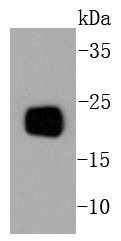 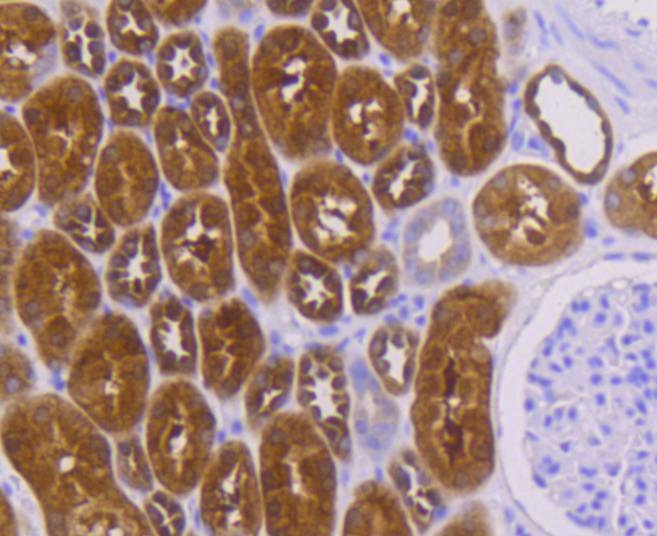 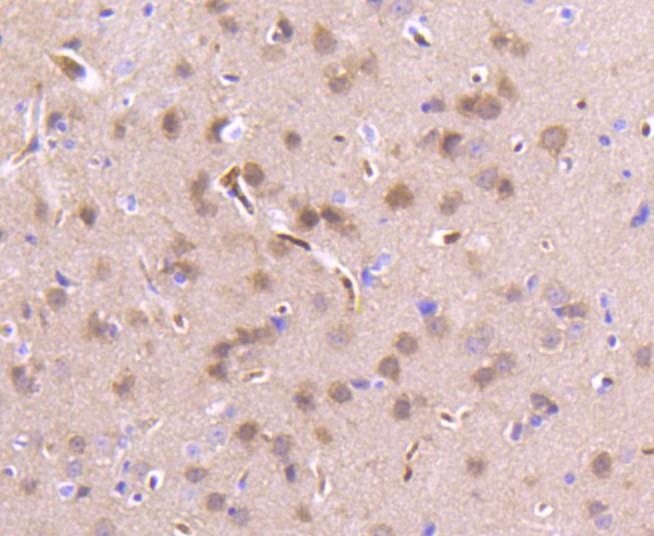 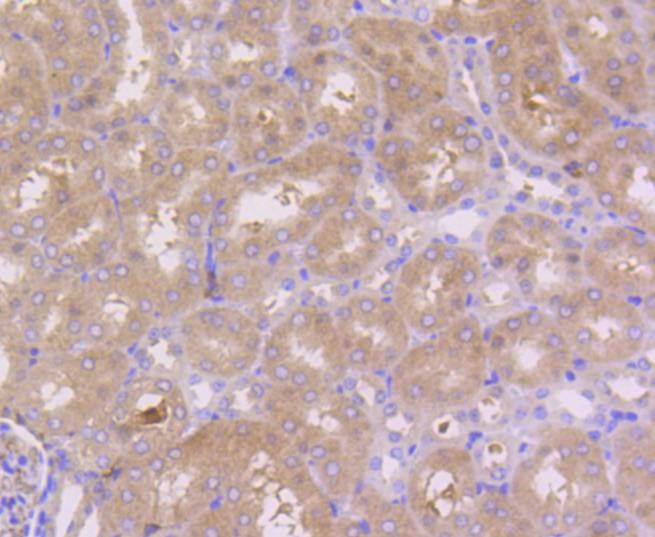 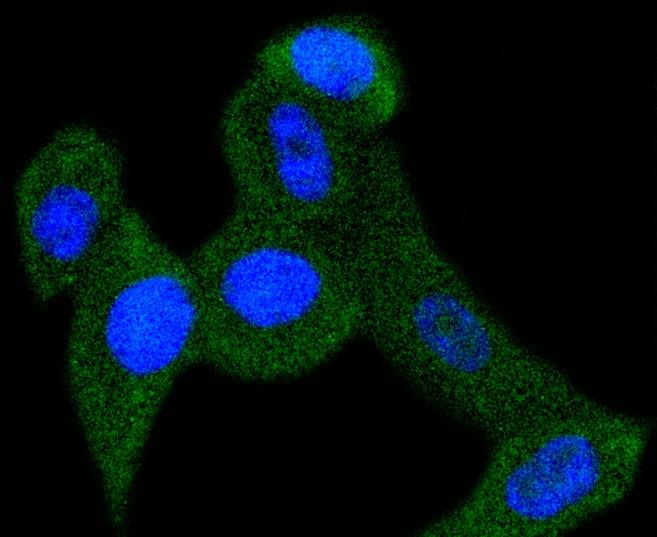 |
| 应用 | ICC/IFIHCIPWB |
| 推荐剂量 | WB: 1:1000-5000; IHC: 1:50-200; ICC/IF: 1:50-200 |
| 抗体种类 | Monoclonal |
| 宿主来源 | Rabbit |
| 构建方式 | Recombinant Antibody |
| 纯化方式 | ProA affinity purified |
| 性状 | Liquid |
| 缓冲液 | 1*TBS (pH7.4), 1%BSA, 40%Glycerol. Preservative: 0.05% Sodium Azide. |
| 研究背景 | Members of the a-chemokine subfamily of inducible, secreted, pro-inflammatory cytokines contain a similar motif, in which the first two cysteine residues are separated by a single residue (Cys-X-Cys), and are also chemotactic for neutrophils. The platelet basic protein (PBP), a member of the a(lpha)-chemokine family, resides in the a(lpha)-granules of platelets and is released upon their activation. Proteolytic cleavage of the amino terminus of PBP leads to the generation of several peptides, which include mature PBP, connective tissue-activating peptide III (CTAP III, also designated low affinity platelet factor IV (LA-PF4)), b-thromboglobulin (b-TG), and neutrophil-activating peptide 2 (NAP-2). PBP and its N-truncated derivatives mediate inflammation and wound healing. Specifically, NAP-2 activates chemotaxis and degranulation in neutrophils during inflammation. The gene encoding human PBP maps to chromosome 4q12-q13. |
| 偶联 | Unconjugated |
| 免疫原 | Recombinant Protein |
| Uniprot ID |
| 分子量 | Theoretical: 21 kDa. |
存储&运输
| 储存方式 | Store at -20°C or -80°C for 12 months. Avoid repeated freeze-thaw cycles. |
| 运输方式 | Shipping with blue ice. |
计算器
引用文献
评论列表
Related Tags: buy Anti-PBP Antibody (4X935) | purchase Anti-PBP Antibody (4X935) | Anti-PBP Antibody (4X935) cost | order Anti-PBP Antibody (4X935) | Anti-PBP Antibody (4X935) molecular weight

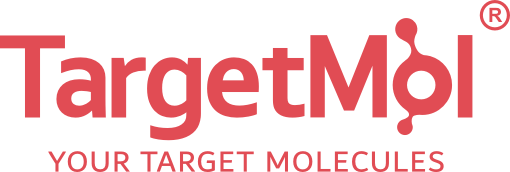


 还可以
还可以

 |
|
评论内容